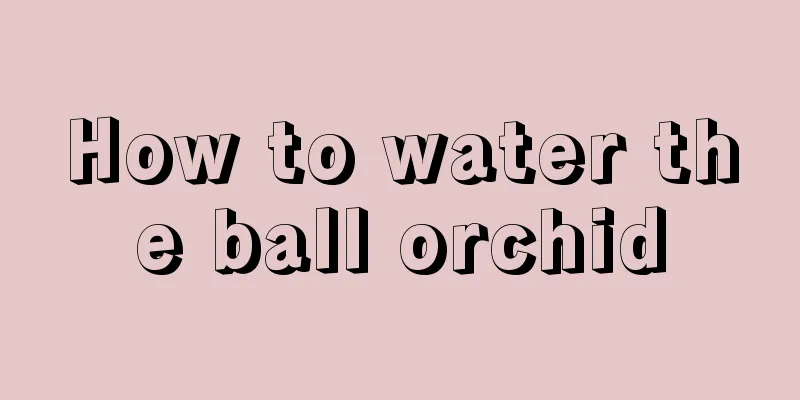How to water the ball orchid

|
When watering Hoya, pay attention to the temperature, season, and amount of water. Too much water and it will rot. There is less water and it is dry, which is very distressing. Summer is quite hot and humid, so we will water your Hoya more. If the ventilation is poor during this process, root rot is normal. If the soil is not permeable, although the roots will rot, the surface will still look good, and death is inevitable. So how should you water the Hoya? Watering timeIn fact, when watering Hoya, you need to pay attention to two stages: summer and winter. In summer, watering is usually done by spraying at 7 am, opening the windows for ventilation after 10 am (note: do not water at this time), and closing the windows at 4 pm. Next you can start watering, first wet the surrounding environment, and then water the flowerpot. The watering steps in winter are roughly the same. Spray around 8 am, then let the ball orchid fully enjoy the morning sunshine. Around 11 am, open the windows for ventilation. Of course, this method is suitable for sunny days, and avoid rain when ventilating on rainy days. Watering frequencyIn summer, you can water it once a day and spray it 2 to 3 times to ensure that the growth environment of the ball orchid has sufficient humidity. The temperature is lower in winter, so reducing the amount of watering appropriately and ensuring that the soil in the pot is properly dry can avoid frost damage. Symptoms of abnormal wateringYellow leaves, which are bright and hard, indicate excessive watering and poor root breathing. Dull and wilted leaves may be caused by insufficient water and oxygen supply due to insufficient watering, or by uneven watering of the roots and insufficient absorption of water by the roots. Burnt tip: The top of the plant turns black and then dries up. This is caused by excessive watering which causes the roots to become too stuffy. PrecautionsIn soil culture environments, water seepage is too fast or too slow during watering ; In soil culture environments, water seeps out quickly when watering, but the soil is not completely saturated with water ; Excessive watering during long periods of cloudy days, hot summers and high humidity can easily cause the roots to become over-wet ; when the temperature is low in winter, lack of proper water control can cause the roots to become cold and damaged. |
<<: How to make marigolds flourish
Recommend
Phalaenopsis propagation methods and cultivation techniques
Phalaenopsis is an elegant and beautiful flower w...
How can the colorful iron grow luxuriantly?
1. Soil ventilation The colorful iron plant does ...
Five types of flowers suitable for planting in large areas
sunflower I don’t know if you have watched “The S...
How to grow sea tiger orchid well
1. Suitable temperature Sea tiger orchid prefers ...
The placement of rubber trees
1. Office: This plant is actually very suitable f...
Can azaleas be planted in the yard?
Can I grow azaleas in my yard? Rhododendron can b...
How to propagate poinsettia and what to pay attention to
How to Propagate Poinsettia Poinsettia is often p...
How to water flowers with salt water
Can salt water be used to water flowers? Light sa...
When is the best month to plant mulberries?
Mulberry , also known as mulberry seeds, mulberry...
When is the best time to transplant yew?
Before transplanting the yew, it is necessary to ...
How to sow orchids
Select pot Choose a tall, unglazed new ceramic po...
How to transplant newly bought jasmine?
Jasmine has won the love of many flower lovers wi...
How to prepare nutrient soil for Clivia cultivation
Clivia soil preparation requirements Clivia prefe...
What insects does acetamiprid mainly kill?
Acetamiprid is a new broad-spectrum insecticide w...
When to plant late beans
1. Planting time The best time to plant late bean...









